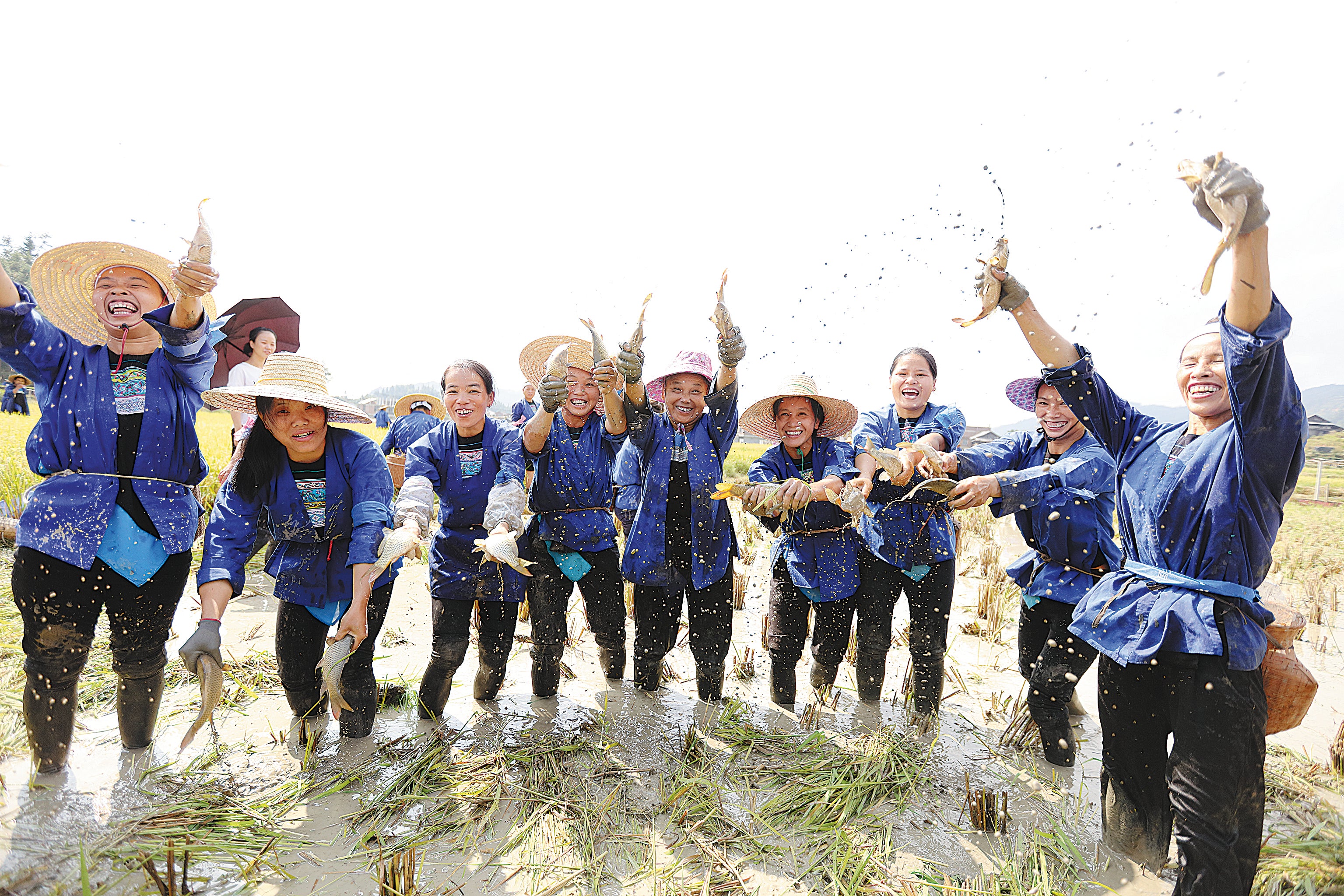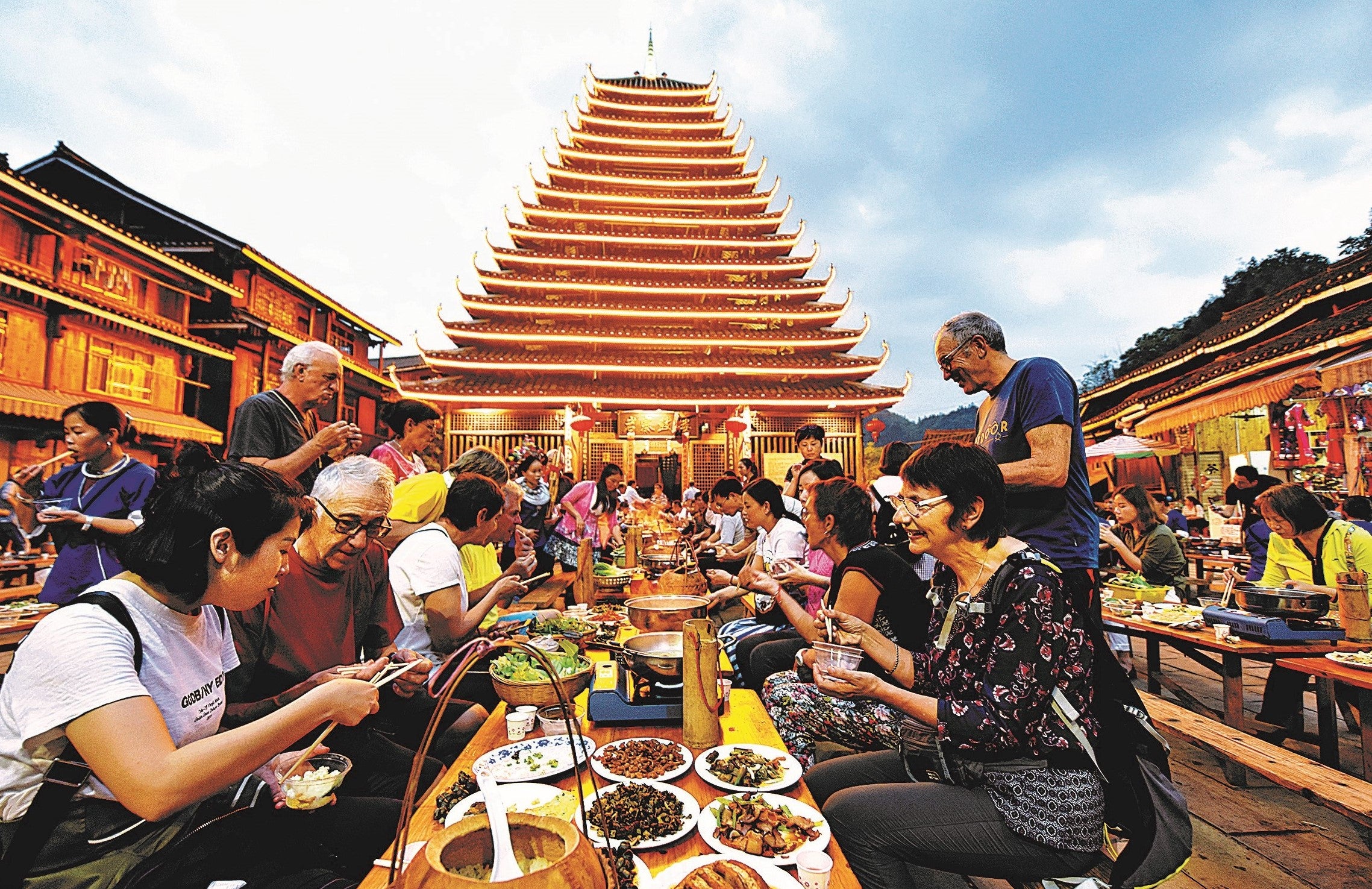The perfect farm combo: rice and fish
THE ARTICLES ON THESE PAGES ARE PRODUCED BY CHINA DAILY, WHICH TAKES SOLE RESPONSIBILITY FOR THE CONTENTS

Harvest time always presents Sanjiang Dong autonomous county at its picturesque best.
In October, farmers are busy harvesting the rice paddies amid the golden farmland and fishing the ponds, and the air is filled with optimism for a big harvest in the county in the Guangxi Zhuang autonomous region.
Wei Fahong seems content with the harvest from his family’s farmland of half an acre in Linlue village of Sanjiang.
This year he reaped more than 3,300 pounds of rice, which will bring his family an income of more than 10,000 yuan (£1,175).
Amid the high wheat straw in the pond, fish were fattened perfectly for the dining table. Some farmers celebrated harvest ahead of time with fresh roast fish.
“It’s harvest season, and having fish is an auspicious practice that expresses our wish for a surplus harvest,” said Shi Shilian, a villager in Sanjiang. In Chinese, the word for fish and a word meaning surplus are pronounced in the same way.“ It’s a good way to celebrate our gains,” Shi said.
Sanjiang county is home to the ethnic Dong people, accounting for 57 per cent of the local population. Locals have relied on paddies and fishing for a living since ancient times.
The fertile land, rich water resources and pleasant climate make things ideal for agricultural development. The symbiosis of the two brings the benefits as the fish eat pests and microorganisms that are bad for the rice, while producing fertiliser for the crop, the local authority said.
The county was named a demonstration zone for standardised fish culture in paddy fields this year, and the authority has come up with standards for all links in the fish-culture chain.
The standards have helped increase production of paddy rice and fish, improving their popularity among consumers, said Hou Menglin, director of the Sanjiang market supervision bureau.

The method has enabled locals to produce premium, high-quality rice and fish, both of which have helped to draw visitors from the city. They can go fishing and grill their catch, while taking in the distinctive rural and ethnic culture as they enjoy the unrivalled hospitality of Sanjiang.
The Chengyang Bazhai scenic area in Sanjiang comprises eight villages with more than 10,000 Dong residents and features a rich ethnic culture. It allows visitors to get a fascinating glimpse into the well-preserved ancient traditions of the ethnic group, including its songs, dances, religious beliefs, folk customs and textile skills.
The historical bridges and traditional wooden buildings are picture perfect, especially the drum towers and houses on stilts.
Yongji Bridge, for instance, features pagodas and pavilions across its span. Completed in 1912, it is typical of many local artistic structures, some of which can boast a history stretching back more than 2,000 years. It was named among the world’s top 10 most spectacular bridges by the American Broadcasting Co. in 2008.
By last year a total of 25,000 people in Sanjiang had engaged in the tourism industry by offering various related services, including running rural homestays and selling local farm produce.
“The benefit of planting alone was minimal, and many people were unwilling to plant, resulting in the serious problem of a lot of abandoned paddy fields,” said Wu Chengdong, deputy head of Sanjiang county.
“If we do a good job with the infrastructure of paddy fields and combine aquaculture with tourism we can not only solve the problems of land waste and food security, but also improve soil stratification and environmental sanitation.”
Previously published on Chinadaily.com.cn

Bookmark popover
Removed from bookmarks